Small-Bore Fittings: Thread Size and Pitch
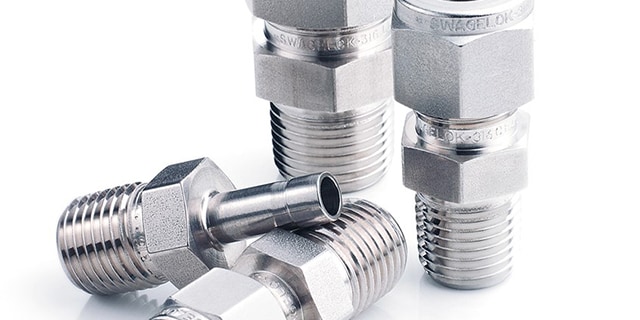
An Introduction to Fittings: Identifying Thread Size and Pitch
The health of your industrial fluid systems relies on every component working together to transport your process fluid to its destination. Your facility’s safety and productivity depend on leak-free connections between your components—and a wide variety of fittings are available to make those connections.
For small-bore systems (tubing systems up to two inches in diameter), identifying the right fitting for your fluid system starts with knowing how to determine thread size and pitch. Armed with this information, you will be able to make an educated choice for leak-tight fluid systems.
This step-by-step video will teach you how to correctly identify thread pitch and size
using calipers, a pitch gauge, and a thread identification guide.
Why End Connections Matter
Because industrial fluid systems often carry dangerous liquids or gases, sometimes at high pressures or extreme temperatures, it is important to ensure your fluid systems are properly connected with appropriately sized fittings.
Some fluids may be noxious if a person breathes them in, creating an immediate safety threat on your plant floor. Other fluids may be flammable, creating an explosion risk if they encounter an ignition source. Component blowouts can occur in highly pressurized systems carrying fluid of any type if a fitting has been installed improperly or if the wrong connections were chosen.
Beyond safety concerns, leaks or other failures can create significant costs and maintenance challenges. Not only will an organization lose money due to leaking, wasted fluid, but any associated downtime required to perform necessary maintenance can lead to significant production losses.
For these reasons, leak-tight fluid system performance in industrial environments is critical. Position yourself to accomplish it by understanding and selecting fittings that are sized and designed to work together.
Thread and End Connection Basics
Even the most experienced professionals can sometimes have difficulty identifying fitting thread sizes and pitch. To make a proper assessment, it is first important to understand general thread and end connection terminology, as well as the standards that govern them, to help classify a specific thread. These include:
-
Thread Gender: Thread gender refers to the placement of the threads on your fitting. Male threads project on the outside of the fitting, while
female threads are found on the inside of the fitting. Male threads are inserted into female threads.
- Crests and Roots: Threads have peaks and valleys, referred to as crests and roots. The flat surface between the crest and the root is called a flank. Different thread standards often have distinct crest and root geometries; ensuring a match is essential for leak-tight performance.
- Pitch: Pitch refers to the distance between the fitting’s threads and can be expressed in both threads per inch and in millimeters. Pitch identification is reliant on the specific thread standard, such as the NPT standard, UTS, ISO standard, and others. When identifying pitch, be sure to identify which of these standards applies to your system so you can remain compliant.
- Angle: A thread’s angle is distinct from its pitch and measures the degree of angle between threads. Like pitch, angle is typically dependent on its associated standard.
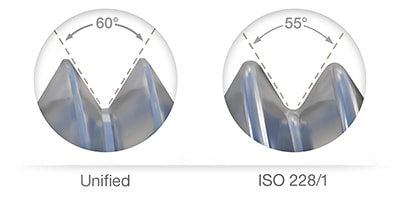
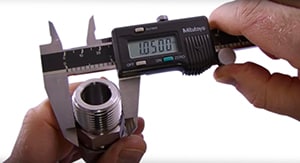 Identifying Thread Types
Identifying Thread Types
To identify your thread size and pitch, you need the right tools, including a caliper, pitch gauge, and thread pitch identification guide. These tools can help you determine whether the thread is tapered or straight.
Tapered threads, which may also be referred to as dynamic threads, are designed to seal as the flanks of the male and female threads are drawn together. They are constructed at an angle in relation to the centerline, whereas straight threads (explained below) are parallel to the centerline. A thread sealant or thread tape is required to fill in the gaps between the crests and the roots to prevent system fluids from leaking at the connection. Tapered threads will generally be effective for system pressures up to 15 000 psi.
Tapered threads are generally effective for system pressures up to 15 000 psi. Straight threads are typically used in applications where system pressure will not exceed 5000 psi.
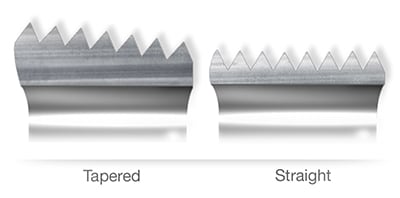
To determine whether your threads are straight or tapered, use a caliper to measure the male or female thread’s crest-to-crest diameter on the first, fourth, and last full threads. If the diameter increases on a male end or decreases on a female end, the thread is tapered. If all the diameters are the same, the thread is a straight thread.
To determine whether your threads are straight or tapered, use a caliper to measure the male or female thread’s crest-to-crest diameter on the first, fourth, and last full threads.
When pressure is not a determining factor, the choice between straight or tapered threads typically comes down to user preference. For large systems, it can be beneficial to specify the same thread type at all connection points to reduce the potential for installer confusion.
Measuring Thread Diameter
Once you identify whether you are working with a straight thread or a tapered thread, the next step is to determine the thread’s diameter. Once again, use a caliper to measure the nominal male or female thread diameter from crest to crest. For a straight thread, measure any full thread. For tapered threads, measure the fourth or fifth full thread.
Be sure to note the geometry of your thread’s roots and crests to ensure a proper match.
When performing this measurement, be sure to additionally note the geometry of your thread’s roots and crests to ensure a proper match. Two different crest and root forms may produce a matching diameter measurement but will not be compatible if joined together.
Note that the diameter measurement obtained may not be the same as the listed nominal size for the given thread. This variation is due to unique industry or manufacturing tolerances. Use your fitting’s manufacturer’s thread identification guide to determine the diameter is as near to the proper size as possible.
Determining Thread Pitch
The next step is to determine the thread pitch. Use a pitch gauge, also called a thread comb, and check the thread against each form until you find a perfect match. Some fractional and metric thread forms are very similar, so this may take a little time.
Establishing Thread Standard
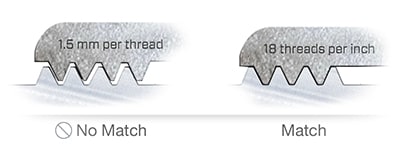
Interested in learning more about thread identification and other skills that can help you develop, build, and maintain dependable industrial small-bore fluid systems? Consider registering for a Swagelok Essentials training course taught at a location convenient to you. Our certified trainers have helped professionals around the world become more confident and knowledgeable about reliable system performance. Contact us to learn more—we’re happy to help.
Related Articles
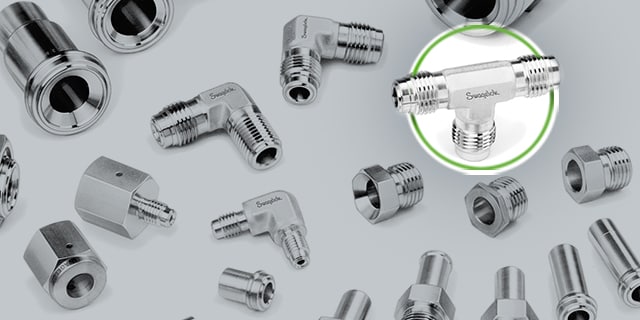
Key Differences in Small-Bore Fittings
Learn the key differences between commonly available tube fitting types used in a variety of applications in this handy introduction to small-bore fittings.
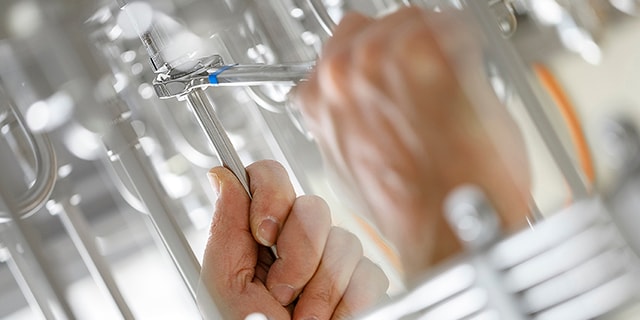
Common Causes and Costs of Fluid System Leaks
The smallest leak can present a serious issue when maintaining your plant’s safety and profitability. Understand how and why leaks occur, how to locate and test for them, and ultimately how to develop a strategy to address and reduce leaks plant-wide.
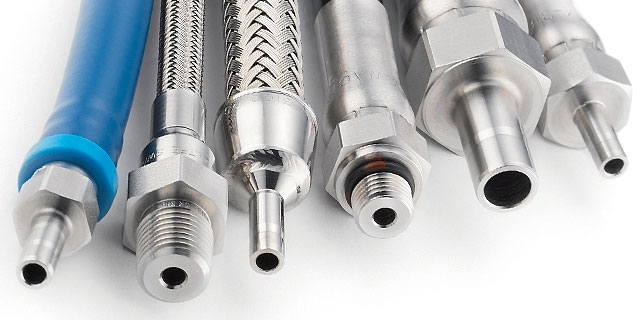
Maximizing the Life of Industrial Fluid System Components
The cost of replacing an industrial fluid system component goes beyond the price of the part. Learn how to lower system costs while maximizing the life of your components with preventive maintenance tips from the professionals at Swagelok.

